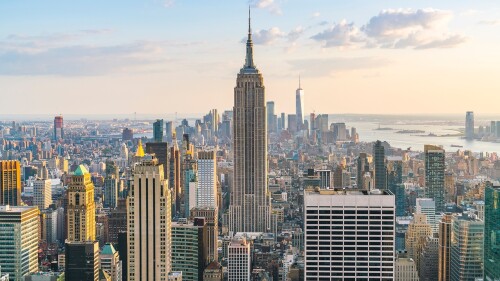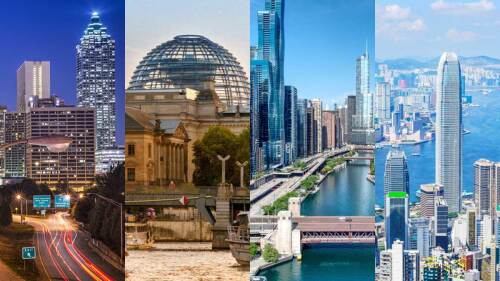London Mayor Boris Johnson believes voters are one of the biggest obstacles to improving the city’s resilience to the effects of climate change.
Speaking at the ULI Global Trustees and Key Leaders Midwinter Meeting in Paris, Johnson said London has to prepare for flooding and other consequences of global warming, but “a lot [of people] worry this is nonsense.”
More commentary from the ULI Midwinter Meeting | ULI’s Jess Zimbabwe on the Mayors’ Panel
“How do you explain to the punters what you want to do?” asked Johnson. “Sometimes big cities have to do difficult things.”
But Johnson, who has been London mayor since 2008, said improvements are being made in raising the city’s environmental credentials, stating that car use in the city is falling because of “huge investments” in cycling infrastructure. The latest U.K. census data show the number of London residents cycling to work more than doubled between 2001 and 2011, from 77,000 to 155,000.
Following Johnson’s recent approval of proposals for a cycle super highway, the city is set to develop the longest segregated urban cycle lane in Europe. Other key resilience measures are initiatives to increase tree cover by 25 percent over the next decade, plus a £12 million (US$18.5 million) fund to improve the energy efficiency of buildings in the capital, Johnson noted.
Johnson’s fellow panelist Manny Diaz, mayor of Miami from 2001 to 2009, agreed that though mayors are at the forefront of battling climate change, communicating the importance of resilience strategies is the most difficult job for any mayor. “Explaining your tactics over reducing crime is much easier,” he said.
“A city is going to be environmentally friendly if it works. If people can ride a bike to dinner, then that city is a city that’s going to work,” Diaz said.
Rome Mayor Ignazio Marino also outlined difficulties of improving resilience, describing it as a huge challenge for the Italian capital. “The city has not done a good job in the last few years,” he said. “Lots of apartments have been built in dangerous places and are at huge risk of flooding. We are trying to change that in the most effective way we can.”
Echoing Johnson, Marino said decreased car use is a priority. He recently eliminated traffic on the historic Via dei Fori Imperiali road in the center of the city. “The decision to close archaeological sites to cars was a popular decision abroad but not popular in the town,” he said.
But Rome will be pushing ahead with plans to reduce car use nonetheless, he said. The city, which currently stands at 900 cars per 1,000 adults, will improve its urban mobility through car sharing and use of electric cars, Marino said. “We are behind the times but changing our habits. We want a different way of moving around the city,” he said.
Rome is also experiencing a radical shift toward increased density, he said. “Instead of geographical expansion, we are trying to consolidate. We have lot of large spaces downtown, and we’re taking space that’s not used any longer and changing it into social housing, private residential, and cultural projects,” said Marino.
Alongside its need for increased resilience, Johnson said London’s economic success and its reputation as a great city are vulnerable unless investments continue to be made in infrastructure and housing. “We have to continue to make London attractive—and not necessarily to the rich and powerful,” he said.
But Johnson said the city’s economy is especially dependent on the development of new infrastructure projects, particularly Crossrail 2, which would travel through London to Surrey and Hertfordshire, helping ease congestion on routes into the capital. “People still want to meet and see one another face-to-face. If they can’t do that, then the economy will seize up. Transport infrastructure is crucial; it is the only way to get good housing built,” he said.
“We have a massive population boom and an insatiable need for connectivity,” he said. He added: “Some people in British politics want to go back to the 1970s—to racism, terrible food, and mediocre beer. London was no fun then; it was much quieter.”
The London mayor—whose proposals for a £50 billion (US$77 billion) island airport in the Thames estuary were rejected by the U.K. Airports Commission last September among environmental and cost concerns—said he wishes the United Kingdom had the “gumption” to push ahead with plans to expand its airport capacity.
But he said an innovative financing model would help raise capital for other much-needed infrastructure projects.
He noted that tax increment financing—which funds regeneration on the promise of higher tax revenues—succeeded in securing £1 billion (US$1.5 billion) of finance for the extension of the London Underground Northern Line to the Nine Elms project between Vauxhall and Battersea and that it represents a “way forward for big projects.”
“You’ve got to show the city can finance stuff for itself. That’s the way to pitch to central government,” he said.





